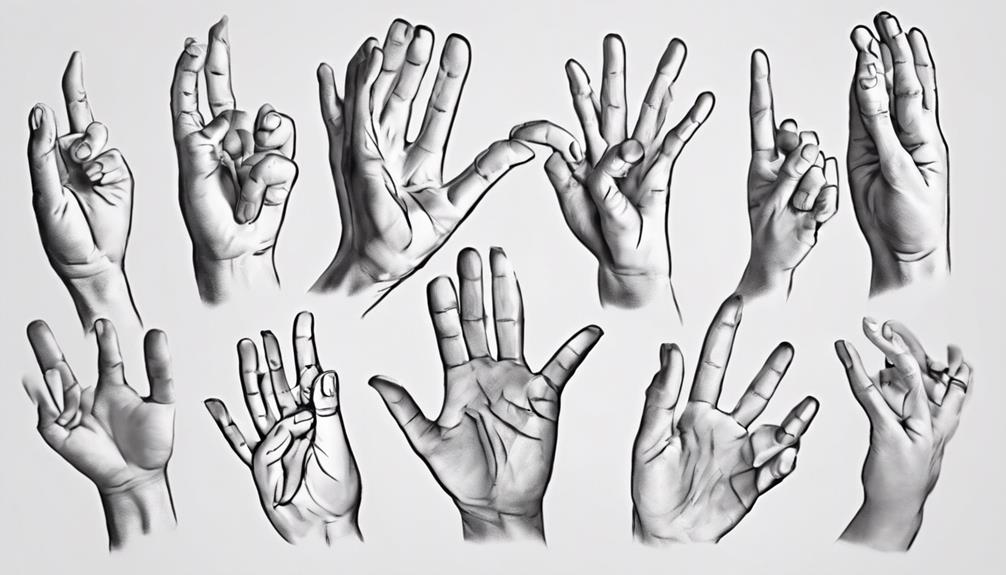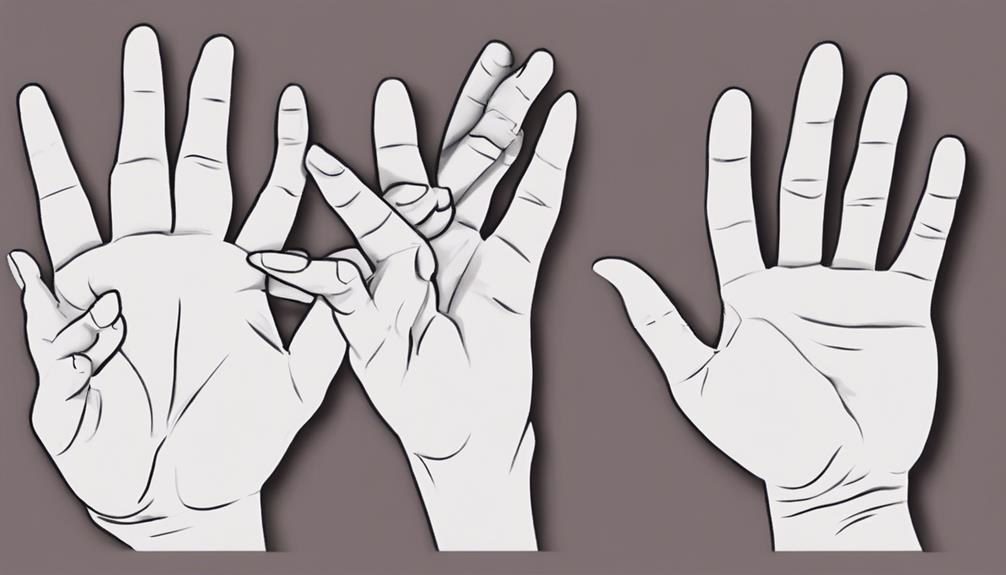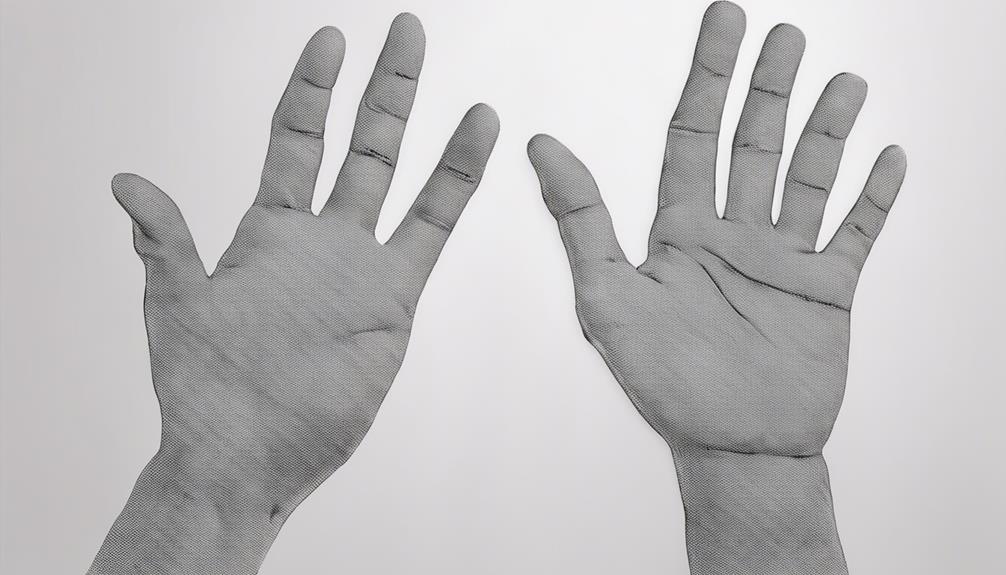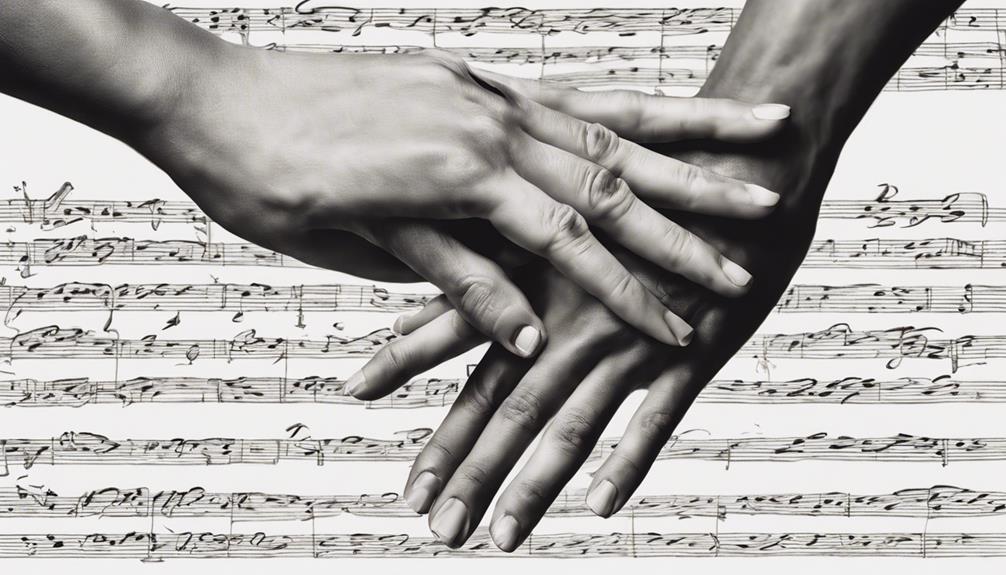We have all experienced times when a small gesture of appreciation can have a big impact.
When it comes to expressing gratitude in sign language, there’s a unique beauty in conveying thanks without uttering a word.
But how exactly do you say ‘Thank you’ in sign language? Well, let’s just say there’s more to it than meets the eye.
Key Takeaways
- Learning sign language enhances connections and understanding with Deaf individuals.
- Mastering the alphabet is crucial for spelling words in sign language.
- Sign ‘Thank You’ with an open B hand shape, outward movement, and eye contact.
- Avoid common signing mistakes by practicing with intention and sincerity.
Benefits of Learning Sign Language
Learning sign language enhances our ability to connect with Deaf and hard of hearing individuals in a meaningful and inclusive way. This skill goes beyond just communication; it fosters deeper relationships and understanding. By acquiring sign language skills, we not only bridge the gap in communication but also contribute to the cognitive development of our brains. Sign language, being a visual-spatial language, offers a unique perspective on how we convey and interpret information, enhancing our overall communication abilities.
Moreover, delving into sign language opens doors to new cultural experiences and connections within the Deaf community. It allows us to immerse ourselves in a rich and vibrant culture, gaining insights and building relationships that we mightn’t have had the opportunity to before. Understanding sign language is a powerful tool that promotes inclusivity and accessibility in our daily interactions, creating a more welcoming and accommodating environment for everyone involved.
Understanding Basic Sign Language Alphabet

To better grasp the fundamentals of sign language, understanding the basic sign language alphabet is essential. The basic sign language alphabet comprises 26 letters, each uniquely represented by a specific handshape or movement. Learning this alphabet is crucial as it forms the foundation for spelling out words and comprehending the structure of sign language.
- Practice Consistency: It’s important to practice forming each letter accurately and consistently. Consistent practice helps in building a strong base for effective communication.
- Familiarize with Handshapes: Familiarize yourself with the handshapes and movements associated with each letter. This familiarity enhances your signing skills and improves overall communication.
- Mastering Communication: Mastering the alphabet enables you to spell out names, places, and other essential words during sign language conversations. This mastery enhances your ability to effectively communicate in sign language.
Step-by-Step Guide to Sign ‘Thank You
We demonstrate signing ‘Thank You’ in American Sign Language by starting with an open B hand shape with fingers together. Position your hand near your lips, in front of you, or lower chin depending on the recipient.
Next, direct the movement outward towards the person being thanked for clarity. It’s important to adapt the sign for different scenarios, whether thanking a single individual or a group.
Remember to maintain eye contact and adjust the sign based on the context of the conversation. Practice this gesture with intention and sincerity to effectively convey your gratitude in ASL.
Common Mistakes to Avoid in Signing

Transitioning from correctly signing ‘Thank You’ to avoiding common mistakes in signing, it’s crucial to be mindful of certain pitfalls to ensure effective communication in American Sign Language. Here are some common mistakes to avoid:
- Using the ‘Good’ sign instead of ‘Thank you: The ‘Good’ sign is non-directional and can lead to confusion.
- Adjusting sign direction based on recipient’s position: Ensure the direction of your sign aligns with the recipient’s position to enhance clarity.
- Avoiding incorrect handshapes and movements: Using the correct handshapes and movements is essential to convey the intended message accurately.
Practicing and Improving Your Skills
Practicing and honing our signing skills can greatly enhance our ability to communicate effectively in American Sign Language. To improve, try practicing ‘Thank you’ in front of a mirror to observe handshape, palm placement, and movement.
Attending ASL classes or workshops can provide valuable feedback and guidance. Engaging in conversations with Deaf individuals exposes us to different signing styles and cultural nuances. Online resources and videos are also useful tools for enhancing our understanding of signing ‘Thank you’ in ASL.
Joining Deaf community events or social groups allows for practicing in real-life situations. Consistent practice and exposure to diverse signing experiences are key to mastering ASL communication. Remember, every opportunity to practice is a chance to refine our skills and deepen our connection with the Deaf community.
Frequently Asked Questions
How Do You Say Thank You in Basic Sign Language?
We say ‘thank you’ in basic sign language by forming an open B hand shape with fingers together and placing it near the lips or lower chin, directed outward towards the person being thanked.
This sign is fundamental in ASL communication and can be adapted for different scenarios.
Mastering this sign is a valuable step in learning sign language and expressing gratitude effectively.
How Do You Say Thank You for Everything in Sign Language?
Sure, in Sign Language, we express gratitude for everything by combining the signs for ‘thank you’ and ‘everything.’ The sweeping motion of both hands from one side to the other in front of your body signifies ‘everything.’
This heartfelt gesture shows appreciation for a wide range of support. Learning this phrase can deepen connections and express profound gratitude effectively.
Let’s embrace this beautiful way to convey thanks in Sign Language!
What Does Thank You Look Like in Asl?
In American Sign Language, the sign for ‘Thank you’ involves the open B hand shape with fingers together, moving outward towards the person being thanked.
The sign’s variations in hand placement and movements depend on the recipient and situation. It’s crucial to adjust the sign based on the audience, context, and cultural norms.
Being aware of the recipient’s position and maintaining eye contact are essential while signing ‘Thank you’ in ASL.
How Do You Sign “Thank You” and “Please”?
We sign ‘thank you’ and ‘please’ in ASL with specific hand movements that convey gratitude and politeness. These signs involve deliberate motions near the face and chest, showing respect for the recipient.
Understanding these gestures is crucial for effective communication and cultural sensitivity.
Mastering the proper way to sign ‘thank you’ and ‘please’ enables us to express appreciation and courtesy in a meaningful way within the Deaf community.
Conclusion
In conclusion, learning how to say ‘Thank you’ in sign language opens up a world of communication and connection with the deaf community.
By mastering this simple gesture, you can express gratitude in a meaningful and impactful way.
So, take the leap and dive into the beautiful world of sign language – it’s like unlocking a treasure chest of endless possibilities!











